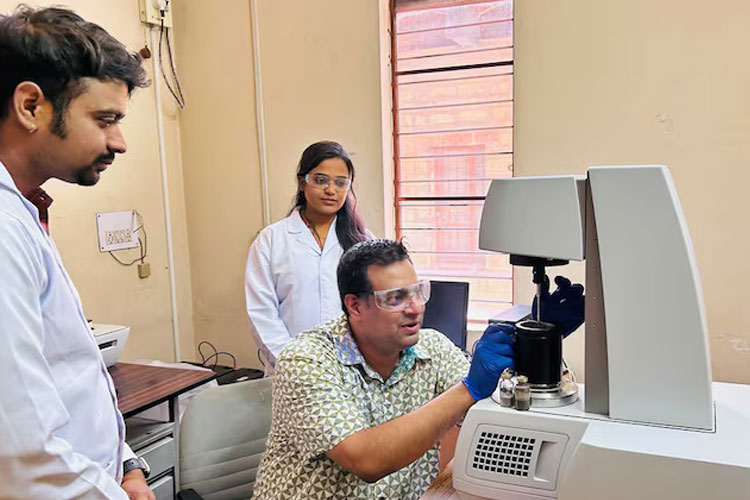

Natural sand is getting scarce, thereby making it crucial to find new alternatives

Researchers at the Indian Institute of Science, Bengaluru have developed a unique material that could replace natural sand in construction. Natural sand is already getting scarce, making it crucial to find new alternatives.
The researchers at IISc's Centre for Sustainable Technologies (CST) are looking at ways to store carbon dioxide from industrial flue gas in excavated soil and construction waste. This can then be used to partially replace natural sand. “This would not only reduce the environmental impact of construction materials but also impart properties that can enhance their use for construction,” IISc said in a statement.
Led by Souradeep Gupta, Assistant Professor at CST, the team has shown that replacing natural sand with carbon dioxide-treated construction waste in mortar and then curing it in a controlled, CO2-rich environment can speed up the development of the material’s engineering properties. The team explored the effects of sequestering carbon dioxide in excavated soil to create cement-lime-soil materials.
CO2 utilisation and sequestration can be a scalable and feasible technology for manufacturing low-carbon prefabricated building products while being aligned with the nation’s decarbonisation targets.
Souradeep Gupta, Assistant Professor, Centre for Sustainable Technologies, IISc
The process is pegged to enhance the materials' compressive strength by 20-22%. His lab has also tested the effect of injecting carbon dioxide gas into clayey soil – typically excavated from construction sites. This resulted in better stabilisation of clay by cement and lime, and reduced the surface area, pore volume and lime reactivity of clay in soil, thereby improving the bulk engineering performance of the material.
In a recent study, Gupta's team explored the effects of sequestering carbon dioxide in excavated soil to create cement-lime-soil materials, replacing up to 25% and 50% of fine aggregates in mortar. This process forms calcium carbonate crystals, reducing medium capillary pores and enhancing compressive strength. Exposing these blocks to carbon dioxide led to early-age strength by 30% and accelerated curing time.
The team also developed 3D-printable materials using excavated soil stabilized with binders like Portland cement, blast furnace slag, and fly ash. These materials demonstrate superior extrusion and buildability, potentially reducing cement and sand requirements by 30% and 50%, respectively. Future research will assess the impact of industrial flue gas on these materials' properties, with plans for industrial application and standards revision in cement-based construction materials.